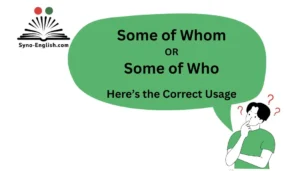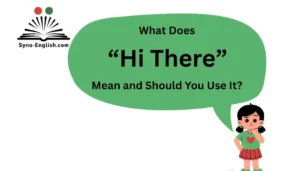When learning In vs Within, it’s important to notice how each preposition changes meaning and clarity, helping your sentences become precise and understandable. I often provide clear examples in my lessons to show the difference between content being in a box and events happening within a set period, which can subtly shift your understanding. Using these prepositions correctly adds precision and makes it easier to extract meaning from your writing.
I usually organize my paragraphs so that every concept appears under its own heading, allowing learners to focus on each idea step by step. When explaining H3 examples, I show how heading structure guides readers through a lesson, making complex usage easier to grasp. With experience, you can see patterns, and using words like in and within becomes more natural.
Understanding the Basics of ‘In’ and ‘Within’
Prepositions define relationships in English, showing how words relate to each other in space, time, and concepts. Both “in” and “within” are prepositions used to express inclusion, but their meanings differ depending on the context.
- “In” generally refers to something located inside a space, whether physical or conceptual.
- “Within” emphasizes that something exists inside defined boundaries, whether they are physical, temporal, or conceptual.
Understanding this subtle distinction is crucial, especially in formal writing, academic papers, legal contexts, and business communication.
Etymology Insight:
- “In” originates from Old English “in”, meaning inside or within.
- “Within” comes from Old English “wiþinnan”, meaning inside or not beyond, with an emphasis on limit and confinement.
Defining ‘In’ as a Preposition
“In” is one of the most versatile prepositions in English. Its core function is to indicate inclusion, location, or state.
Spatial Usage
“In” shows that an object or person is located inside a space:
- “She is in the room.”
- “The files are in the drawer.”
Idiomatic Expressions
“In” is also common in idiomatic expressions:
- In trouble → facing problems
- In love → experiencing romantic feelings
- In progress → ongoing process
In vs Into
One of the common points of confusion is “in” versus “into.”
| Phrase | Correct Usage | Notes |
| “She went in the room.” | ❌ | Should use “into” for movement |
| “She went into the room.” | ✅ | Correct for motion |
| “Put the book in the box.” | ✅ | Static location, no motion implied |
| “Move the book into the box.” | ✅ | Emphasizes movement from outside to inside |
Rule of Thumb: Use “in” for static inclusion and “into” for movement or transformation.
The Versatility of ‘Within’ in English Grammar
“Within” emphasizes boundaries, limits, and restrictions. While “in” simply states that something is inside, “within” conveys confined inclusion.
Spatial Examples
- “Stay within the marked lines.”
- “Within the walls of the fortress, safety is guaranteed.”
Temporal Usage
- “Submit the assignment within 24 hours.”
- “Within a decade, technology will transform our lives.”
Conceptual Boundaries
- “You are acting within your rights.”
- “Within the framework of the law, this decision is valid.”
- Key Insight: Whenever a boundary, limit, or restriction exists, “within” is usually the correct choice.
Practical Usage of ‘In’ in Various Contexts
“In” is broad, flexible, and widely used.
Expressing Inclusion
- “There are ten students in the classroom.”
- “He is in the group of researchers.”
Indicating Location
- Physical: “She lives in London.”
- Conceptual: “He is in a state of confusion.”
Time Expressions
- Days/Months/Years: “I was born in July.”
- Time of day: “I exercise in the morning.”
Other Nuanced Examples
- “In danger” → facing risk
- “In control” → having authority
- “In debt” → financially obligated
Quick Tip: Think of “in” as a general indicator of inclusion, without implying strict boundaries.
Exploring the Boundaries of ‘Within’
Unlike “in,” “within” implies limits. These can be spatial, temporal, or conceptual.
Spatial Boundaries
- Physical: “Within the garden, flowers bloom beautifully.”
- Metaphorical: “Within your comfort zone, growth is limited.”
Temporal Boundaries
- Deadlines: “Complete the project within one week.”
- Time periods: “Within the 1990s, several breakthroughs occurred in computing.
Conceptual Boundaries
- Legal: “Within the contract, both parties have rights and obligations.”
- Policy: “Employees must act within company guidelines.”
Pro Tip: Whenever you want to stress a limit, a restriction, or a maximum time frame, “within” is the ideal choice.
The Subtleties of Time: ‘In’ Versus ‘Within’
Time is where confusion between “in” and “within” is most common.
Using ‘In’ for General Time
- “I will visit my parents in two days.” → approximate time frame
- “The conference is in July.” → general time reference
Using ‘Within’ for Time Limits
- “I will finish the report within two days.” → no later than two days
- “Payment must be made within 30 days.” → strict deadline
Comparison Table:
| Expression | Meaning | Notes |
| In two days | Approximate time | Flexible, not strict |
| Within two days | Maximum time limit | Deadline or restriction |
| In July | Month reference | General timing |
| Within July | Before the end of July | Implies a deadline |
Rule of Thumb:
- “In” → general or approximate time
- “Within” → exact, bounded, or restricted time
Common Misconceptions and Errors with ‘In’ and ‘Within’
Mistakes in Interchangeability
- ❌ “Submit in 24 hours” → sounds informal and imprecise
- ✅ “Submit within 24 hours” → correct, emphasizes the deadline
- ❌ “In the limits” → incorrect usage
- ✅ “Within the limits” → correct, implies boundaries
Misunderstood Idioms
- “In control” is correct; “within control” is rarely used.
- “In danger” works; “within danger” is incorrect.
Tips to Avoid Errors
- Ask yourself: Is there a defined boundary?
- Yes → within
- No → in
- For deadlines or time restrictions, prefer within.
- For general locations or time references, use in.
Advanced Examples and Case Studies
Understanding the subtle differences between “in” and “within” is easier with real-world examples.
Business and Formal Writing
- In: “The documents are in the cabinet.”
- Within: “All reports must be submitted within five business days.”
Academic Usage
- “Within the framework of this study, participants were surveyed about their habits.” → emphasizes limits and context
- “Data were collected in various schools across the city.” → general inclusion
Literary Examples
- “Within the heart of the forest, silence reigned.” → bounded, specific area
- “In the forest, one finds many creatures.” → general location
Comparison Table
| Context | In | Within |
| Location | general space | confined space |
| Time | approximate | restricted or maximum |
| Concept | broad inclusion | specific limit |
| Example | “In the city” | “Within the city limits” |
Tips and Rules of Thumb for Using ‘In’ vs ‘Within’
- Choose “in” for:
- General locations
- Approximate time frames
- Idiomatic expressions without boundaries
- Choose “within” for:
- Defined boundaries
- Maximum limits or deadlines
- Legal, academic, or business formal writing
Mental Test:
“Is there a defined boundary or limit?”
- Yes → within
- No → in
Conclusion
Understanding the difference between In vs Within is essential for writing and speaking English with clarity and precision. While both indicate inclusion, in often refers to a general location or space, whereas within emphasizes boundaries, limits, or a period of time. When used correctly, these prepositions can drastically improve the flow and meaning of sentences, making your communication more accurate. Misusing them, however, can cause subtle confusion, especially for learners trying to convey time-sensitive or location-specific details.
From personal experience, practicing these prepositions in real-life contexts—like describing events, locations, or time frames—helps solidify their proper usage. Paying close attention to examples and forming your own sentences strengthens comprehension and makes the distinctions intuitive. Over time, the difference between in and within becomes second nature, enhancing both your writing and spoken English. The key is to consistently notice patterns, follow instructions, and focus on context to ensure clarity. Mastery of these subtle differences not only refines grammar but also boosts confidence in using English effectively in everyday and professional communication.
FAQs
What is the main difference between In and Within?
In refers to general location or space, while Within emphasizes boundaries, limits, or a timeframe.
Can in and within be used interchangeably?
Sometimes, yes, but context matters. Using within usually sounds more precise than in.
How can I remember the difference?
Think of in as general inclusion and within as inside specific limits or timeframes.
Is it within formal English?
Yes, within is slightly more formal and often used in writing or professional contexts.
Can Within be used for time?
Absolutely. Example: “Finish the work within two days.”
Can in be used for time?
Yes, but it’s broader. Example: “I will complete it in a few days.”
Does context affect which preposition to use?
Yes. Context, boundaries, or duration determine whether in or within is appropriate.
Are there common mistakes to avoid?
Yes. Using in when a strict boundary or timeframe is needed is a common error.
Can I practice using examples?
Definitely. Writing sentences with both prepositions in different contexts helps internalize their use.
Do native speakers always follow this rule?
Not always, but precise usage of in vs within improves clarity and professionalism.




